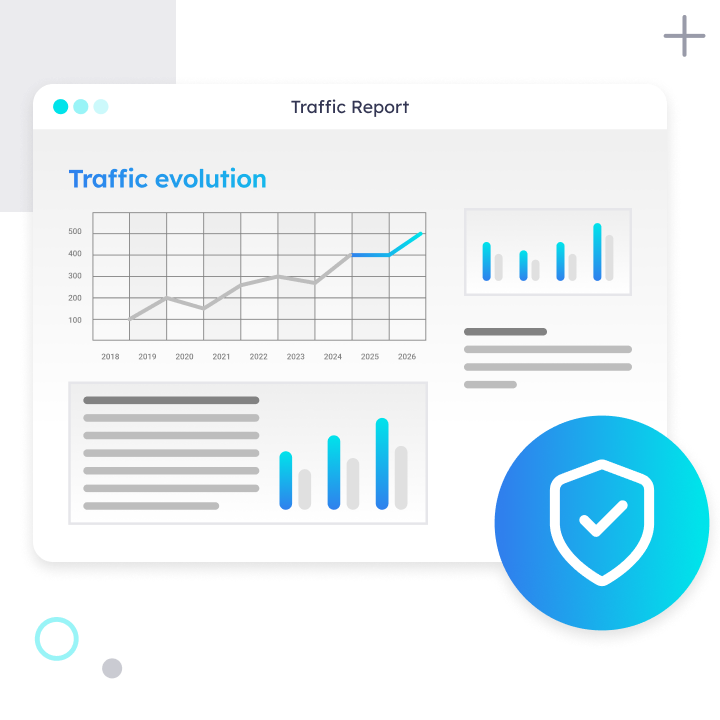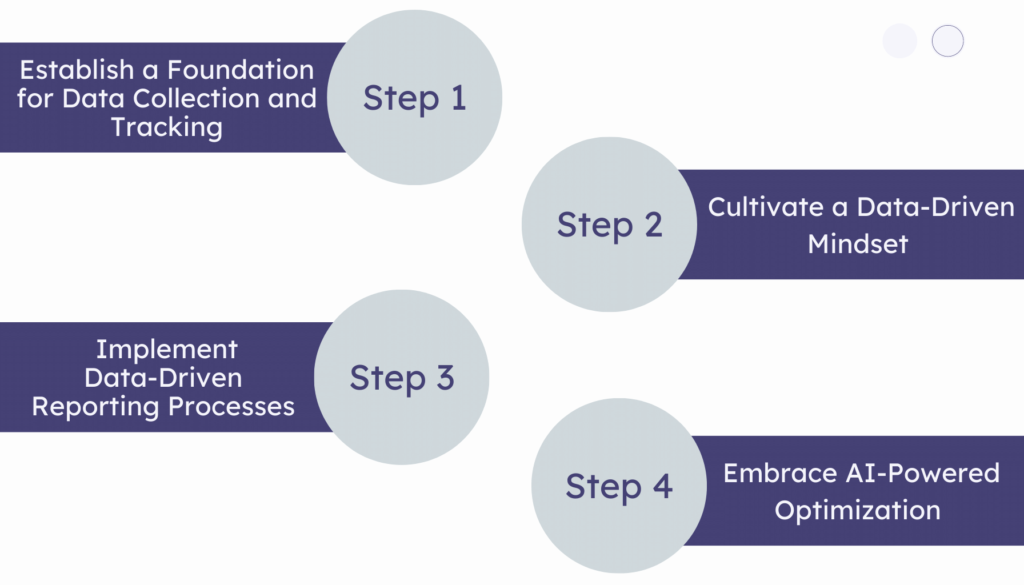
Conversion Rate Optimization (CRO) has long been a crucial aspect of digital marketing, enabling businesses to maximize their online performance by driving more conversions and revenue. Traditionally, CRO has relied on manual analysis and A/B testing, but with the advent of Artificial Intelligence (AI), a new era of optimization has emerged.
Traditional Approaches to Conversion Optimization and Their Limitations
Traditional CRO approaches often involve manually analyzing data or having to review complex dashboards and excels to gain insights into user behavior and identify potential areas for improvement.
This process typically included examining metrics such as click-through rates, bounce rates, and conversion funnels. While manual analysis can provide valuable insights, it is time-consuming and susceptible to human bias.
A/B testing, another commonly used method in CRO, involves comparing two or more variations of a webpage or element to determine which one performs better in terms of conversions. This could also be a valuable technique, but limited in its scope and reach. Conducting numerous A/B tests to explore various elements and combinations can be a time-intensive process, and it may not always yield statistically significant results.
Basically, the limitations of traditional CRO practices can be summarized as follows:
- Time-Intensive and Resource-Heavy:
Traditional CRO approaches often require significant time and resources to execute effectively. Manual analysis, conducting A/B tests, and implementing changes based on findings can be time-consuming, especially for large-scale websites with multiple pages and elements. This can hinder the speed at which optimizations are implemented, delaying potential improvements in conversion rates.
- Limited Insights and Scalability:
Traditional CRO methods, such as manual analysis and A/B testing, provide insights based on the data available at a given moment. However, they may not capture the full complexity of user behavior and preferences. Additionally, as websites and user interactions become more dynamic and personalized, traditional methods may struggle to keep up with the evolving landscape. They may lack the scalability needed to handle large datasets and analyze user behavior in real time.
- Incomplete Understanding of User Behavior:
Traditional CRO approaches often focus on surface-level metrics and behavior, such as click-through rates and session duration. While these metrics provide some insights, they do not always reveal the underlying motivations, needs, and pain points of users. Without a comprehensive understanding of user behavior, you may miss opportunities to optimize your conversion funnels effectively.
- Limited Optimization Potential:
Traditional CRO methods primarily rely on human intuition and hypothesis testing. While valuable, this approach may miss out on more nuanced and complex patterns in user behavior that AI-driven approaches can uncover. The limitations of human bias and cognitive capacity may restrict the ability to identify optimal variations and combinations that lead to significant conversion improvements.
As the limitations of traditional CRO methods become evident, businesses are turning to AI-powered approaches to overcome these challenges.
How is AI Reshaping CRO strategies?
Boosting Conversions by Identifying Patterns and Insights
AI-powered data analysis goes beyond surface-level metrics, allowing you to gain a deeper understanding of user behavior. By processing and analyzing large datasets, AI algorithms can identify patterns, trends, and anomalies that human analysis might miss. These insights provide valuable guidance for optimizing conversion funnels, refining messaging, and enhancing user experiences to increase conversion rates.
Increase +180%
leads
demos
sales
bookings
from your website with AI
Get more conversions from your existing website traffic delivering personalized experiences.

Getting Marketers the Right Data by Leveraging Machine Learning Algorithms
AI brings powerful machine learning algorithms to the field of CRO, enabling you to analyze vast amounts of data efficiently. By applying algorithms like clustering, classification, and regression, AI can uncover hidden patterns and correlations within user behavior data. This automated analysis provides you with actionable insights that drive optimization strategies.
Delighting Users Through Personalized Recommendations
By leveraging user data and historical behavior, AI algorithms can generate personalized recommendations that cater to individual preferences and needs. Whether it’s suggesting related products, offering personalized content, or guiding users through a conversion funnel, these recommendations enhance user satisfaction and encourage conversions.
Forecasting User Behavior and Anticipating Needs
AI’s predictive analytics capabilities can enable you to anticipate user behavior and make proactive optimization decisions. By leveraging historical data, AI algorithms can forecast future user actions, such as conversion likelihood, click-through rates, or churn rates.
These models use advanced algorithms, such as regression, time series analysis, and neural networks, to identify patterns and correlations in user behavior data. With the ability to predict the outcome of different optimization strategies, you’ll be able to make data-driven decisions, allocate resources effectively, and achieve significant improvements in conversion rates.
These predictive insights empower businesses to optimize websites, landing pages, and marketing strategies, ensuring the right message reaches the right user at the right time.
Free template: CRO audit checklist
Discover everything you need to start identifying drop-offs and increase conversions.

Introducing a Data-Driven Optimization Culture in Your Business
It’s time to embrace a data-driven culture of constant optimization to stay ahead of the curve. By leveraging the power of AI informed decisions are made while continuously improving conversion rates.
Here are key steps to introduce a data-driven culture of constant optimization in your business:
1. Establish a Foundation for Data Collection and Tracking
- Set up comprehensive analytics tools, such as Google Analytics or Adobe Analytics, to gather data on user behavior, conversions, and key performance indicators (KPIs). Ensure proper tracking is in place across all relevant touchpoints, including websites, landing pages, and marketing campaigns.
- Identify and define the key metrics that align with your business goals. These may include conversion rates, bounce rates, average order value, or engagement metrics. Establish benchmarks to measure performance and track progress over time.
2. Cultivate a Data-Driven Mindset
- Encourage teams to experiment with different optimization strategies and embrace a mindset of continuous improvement. Promote the idea that failures are learning opportunities and that data-driven decision-making is crucial for growth.
- Provide training and resources to enhance employees’ data literacy skills. Help them understand how to interpret data, draw insights, and make informed decisions based on data-driven evidence. This empowers individuals across the organization to contribute to the optimization process.

3. Implement Data-Driven Reporting Processes Across Teams
- Establish a regular cadence for data analysis and reporting. Review key metrics, identify trends, and analyze conversion funnels to uncover areas for optimization. This ensures that optimization efforts are data-backed and focused on areas with the most potential impact.
- Encourage cross-functional collaboration between teams, such as marketing, design, and development. Foster an environment where insights from different perspectives can be shared, leading to holistic optimization strategies. Collaborative decision-making ensures that optimization efforts consider a wide range of factors and potential solutions.
4. Embrace AI-Powered Optimization
- Explore AI-powered CRO tools and platforms that can provide automated data analysis, generate insights, and provide optimization recommendations, such as Pathmonk Intelligence. These tools can handle large datasets, identify complex patterns, and deliver real-time optimization guidance, streamlining the optimization process.
- Embrace AI-driven personalization strategies to deliver tailored experiences to users. Implement AI-driven recommendation systems, dynamic content, and personalized messaging, such as Pathmonk Accelerate, to engage users and drive conversions. Continuously test and iterate these personalization strategies based on data insights to maximize their impact.
Conclusion
The convergence of Artificial Intelligence and Conversion Optimization has ushered in a new era of data-driven decision-making and optimization strategies. By harnessing the power of AI, you can unlock deeper insights, leverage advanced data analysis techniques, and personalize user experiences at scale. As AI enables the optimization of conversion rates with precision and efficiency, traditional approaches are being left behind.
AI-powered data analysis empowers the extraction of valuable insights from large datasets, uncovers hidden patterns, and makes data-driven optimization decisions. Through personalized recommendations and AI-driven personalization strategies, you can create tailored user experiences that resonate with individual preferences, increasing engagement and conversion rates.
By embracing AI-driven strategies and cultivating a data-driven culture, you can position your business at the forefront of optimization, shaping a future where conversions are optimized with precision and efficiency.








